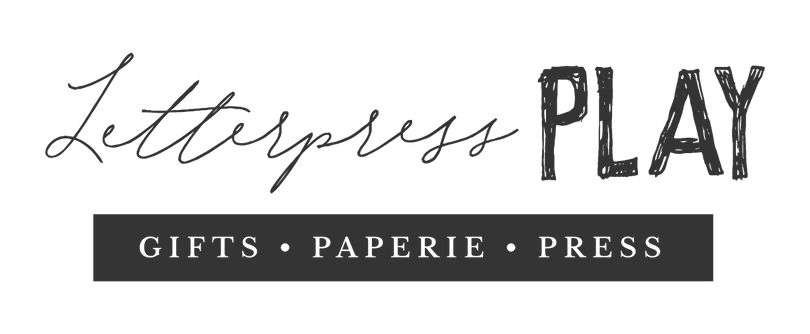
Meet the Presses: Friedl Dicker-Brandeis, Jewish painter & teacher whose legacy lives on
Meet the Presses: Friedl Dicker-Brandeis, Jewish painter & teacher whose legacy lives on
In our Meet the Presses series, we highlight the pioneering women in print that we’ve named our beloved letterpress machines after. These women have shown us that with perseverance and bravery, it’s possible to not only achieve one’s goals, but to also have a large impact on this world. Every day in our studio, when we look at our letterpress machines, we thank these bold women who paved the way for printers like us.

Another one of those irreplaceable artists was Friedl Dicker-Brandeis, an Austria-born painter, architect, and teacher who was murdered at Auschwitz at the young age of 46. But Friedl is and was so much more than the atrocities the Nazis inflicted upon her. Friedl had a significant impact on the lives of thousands of young children and future generations to come.
Frederika Dicker was born in 1898 to a poor Jewish family in Vienna, Austria. Her mother passed away when Friedl was just a toddler. Like many Jews who were killed by the Nazis, not a lot of information is available on Friedl’s childhood, but her story becomes clearer upon entering the iconic art school Weimar Bauhaus.
Frield studied and taught at the Weimar Bauhaus campus for four years, and she honed skills in printing, metalwork, and weaving. Upon her graduation, the young woman traveled to Berlin and Prague, where her career flourished. She worked in theater, designing costumes and sets; she used her architectural knowledge to design a tennis club and guesthouse for a countess; she designed a Montessori kindergarten playroom and toys to help children use their intelligence and imagination; she taught art to students; and she painted.
Known for being a supporter of Communism, Frield was politically active in her 20s and 30s and was arrested in 1934 for Communist activities. Though the Nazi Party was gaining control over Europe, Friedl didn’t hide her beliefs. She was able to procure a passport for Palestine in 1938, but she opted to stay in Czechoslovakia (now Czech Republic) when her husband, Pavel Brandeis, was unable to obtain his own passport. Life became increasingly difficult as jobs dried up and people fled Eastern Europe, and by 1942, 44-year-old Friedl and her husband were sent to Theresienstadt (otherwise known as Terezin), a ghetto and concentration camp outside of Prague. She was allowed to take one suitcase, which was filled with her art supplies.

Through propaganda films and a sham tour the Nazis gave to the Red Cross, life at Theresienstadt was presented as a happy place for Jews. However, the camp was indeed a ghetto and gateway to Nazi death camps. Men and women were forced into labor, and 33,000 individuals died from disease or starvation at the site. Unlike many of the other concentration camps, Theresienstadt was able to build a vibrant arts community and a prisoner-led education system.
For the almost two years Friedl lived in Theresienstadt, she taught art to hundreds of children. She hoped that in doing so she could help them cope with the horrors of the ghetto. (You can read comments about Frield from her surviving students here.) She even put on a hidden exhibit of her pupils’ work. Heartbreakingly, 90% of these kids were sent to their deaths—as was Friedl.
In 1944, after Pavel was transported to Auschwitz, Friedl volunteered to go so she could be with her husband. She, along with 60 of her students, traveled to Auschwitz where they murdered. Pavel survived.
Before Friedl’s death, she packed thousands of her students’ artwork in two suitcases that were hidden at the camp. After the war ended, the suitcases were discovered and taken to Prague’s Jewish Museum. Today, many of the artworks hang permanently in the Pinkas Synagogue in Prague. You can view some of this artwork here.
Over the decades, Friedl’s name has become more well known as her works have traveled the globe and stories of her contributions to humanity have been shared. At Letterpress PLAY, we honor Friedl by naming our Challenge Diamond Power Paper Cutter 30.5 after her. This machine was built only three years after Friedl perished, but for us, this remarkable woman’s legacy lives on.
